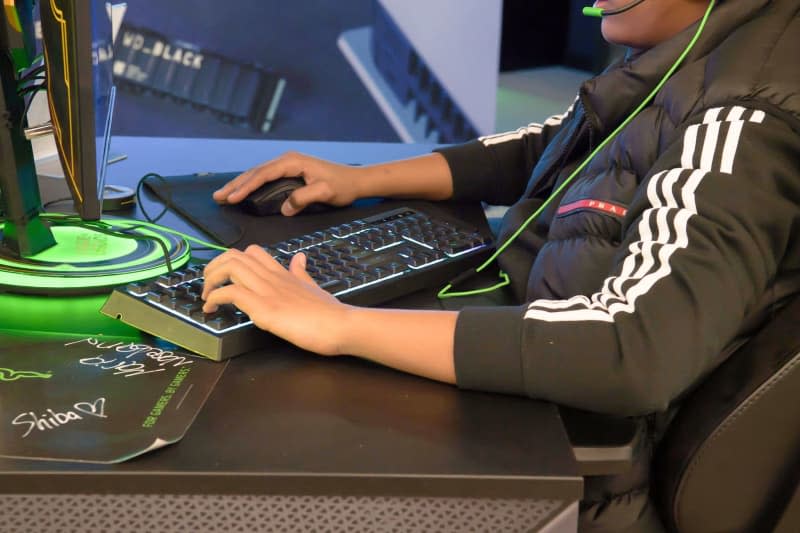Mechanical keyboards: Speedier, satisfying and sustainable typing

Berlin (dpa) — Too loud, too clunky, too heavy, and not exactly cheap: There are many reservations about classic mechanical keyboards. Flat, light, and inexpensive models, typically what's known as "membrane keyboards" have become commonplace.
However, there’s also a market for modern mechanical keyboards. It's not just PC gamers who swear by them — other user groups such as frequent writers often favour the clear pressure point or characteristic click sound they provide.
There are basically two different technologies used for keyboards today: membrane keyboards made of materials such as rubber or silicone and mechanical keyboards.
The former are usually quiet to use and so are often used in open-plan offices. They can also be produced cheaply because they only consist of a few components.
When you click, the keystroke is transmitted to the contact via a silicone mat with rubber nubs on it. Over time, however, this plastic or rubber mat can wear out, meaning that a button has to be pressed harder for it to move.
Springs and switches
Mechanical keyboards, on the other hand, work using metal springs, joints, and switches. “Each key is equipped with an individual switching mechanism that works about halfway through the keystroke,” explains Paul Gerz from keyboard specialist Geekboards.
In mechanical keyboards, the resistance is generated by a spring, not by rubber knobs. That makes the keyboard more precise and more durable.
Depending on the design and the switches, there is a more or less clearly defined pressure point. There are even optical switches that work with a light beam: If this is interrupted, the keystroke is registered.
When it comes to switches, they can be divided into linear, tactile and clicky.
Linear switches do not provide noticeable haptic feedback when the key press is registered. They tend to feel easy to press and are often used by multiplayer or action gamers.
Tactile switches provide haptic feedback when a key press is registered. The pressure point and the amount of pressure required to reach it can vary. Such switches are often used by competitive gamers.
Clicky switches, in addition to haptic feedback, also provide acoustic feedback: a significant click. They are popular with strategy players and those who write a lot.
Mechanical keyboards more sustainable
Practically every element of a mechanical keyboard can be replaced, the switches and keycaps being replaced most often, says Paul Gerz. For this reason, they’re a more sustainable choice than membrane models.
A third variant is the scissor-switch keyboard. These are constructed similarly to membrane keyboards — they have a rubber mat in them — but they use a different system to trigger the contacts.
“There is a scissor mechanism underneath the key cap, which allows for a flatter design overall,” says Tanja Knahn from the peripheral device manufacturer Cherry.
This type of keyboard is therefore often used in laptops. Scissor keyboards are also more stable than membrane models.
But neither scissor nor membrane keyboards can hold a candle to mechanical keyboards when it comes to precision and speed, according to Knahn.
Mechanical keyboards offer faster clicks, faster switching and a more satisfying keystroke. This particularly appeals to gamers, but also many people who do lots of typing for work, such as software developers.
Which keyboard type you choose depends on whether you prefer to type softly, quietly, or with an audible click.
“The switches differ particularly in their actuation force,” Knahn explains. “Every user has individual preferences when it comes to the ‘heaviness’ of the button.”
The key to this is the spiral spring inside the switch, explains keyboard expert Paul Gerz. A gamer might prefer a linear switch that triggers early, but a typist could favour a tactile switch that has a clearly noticeable trigger point.

